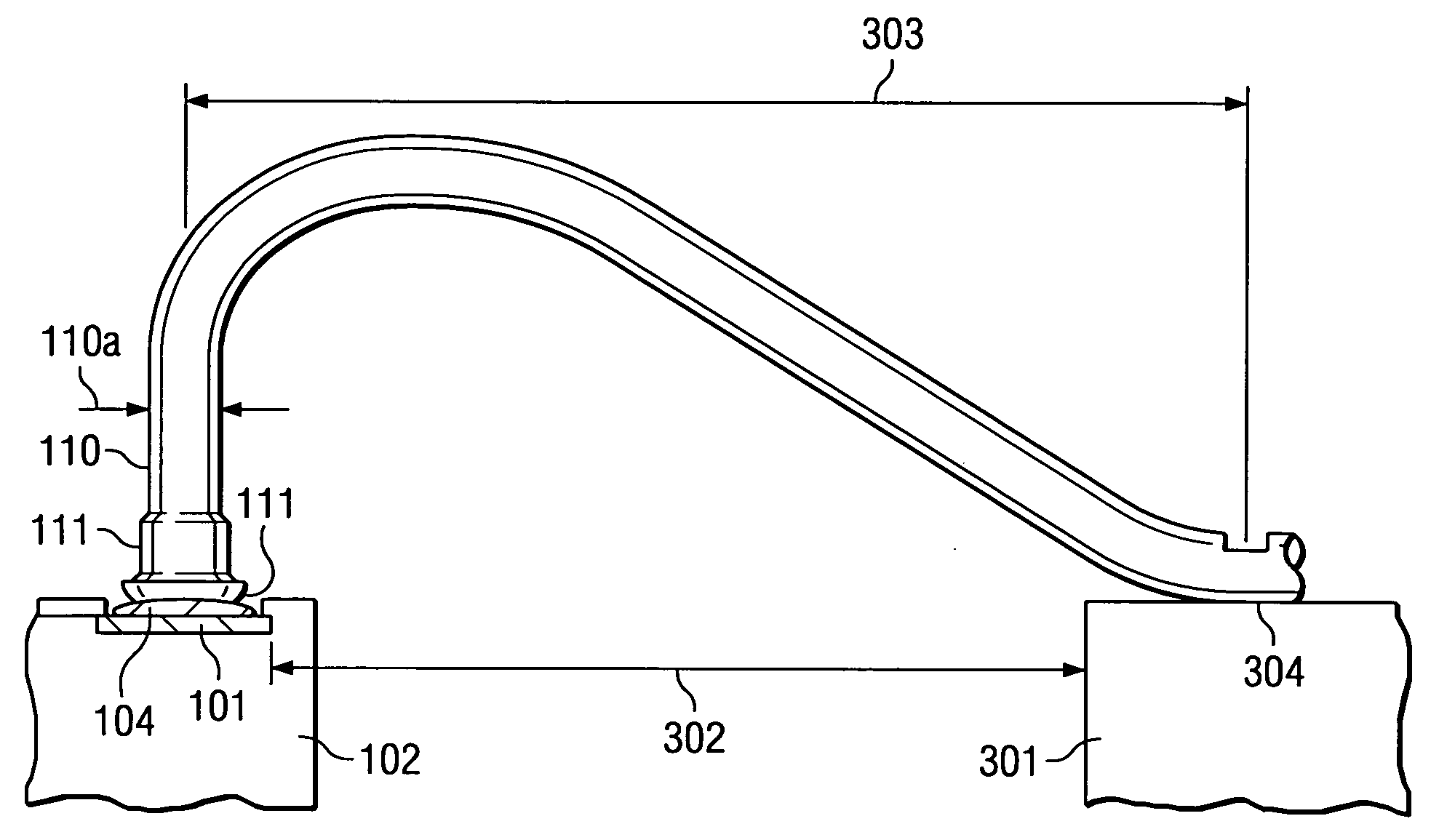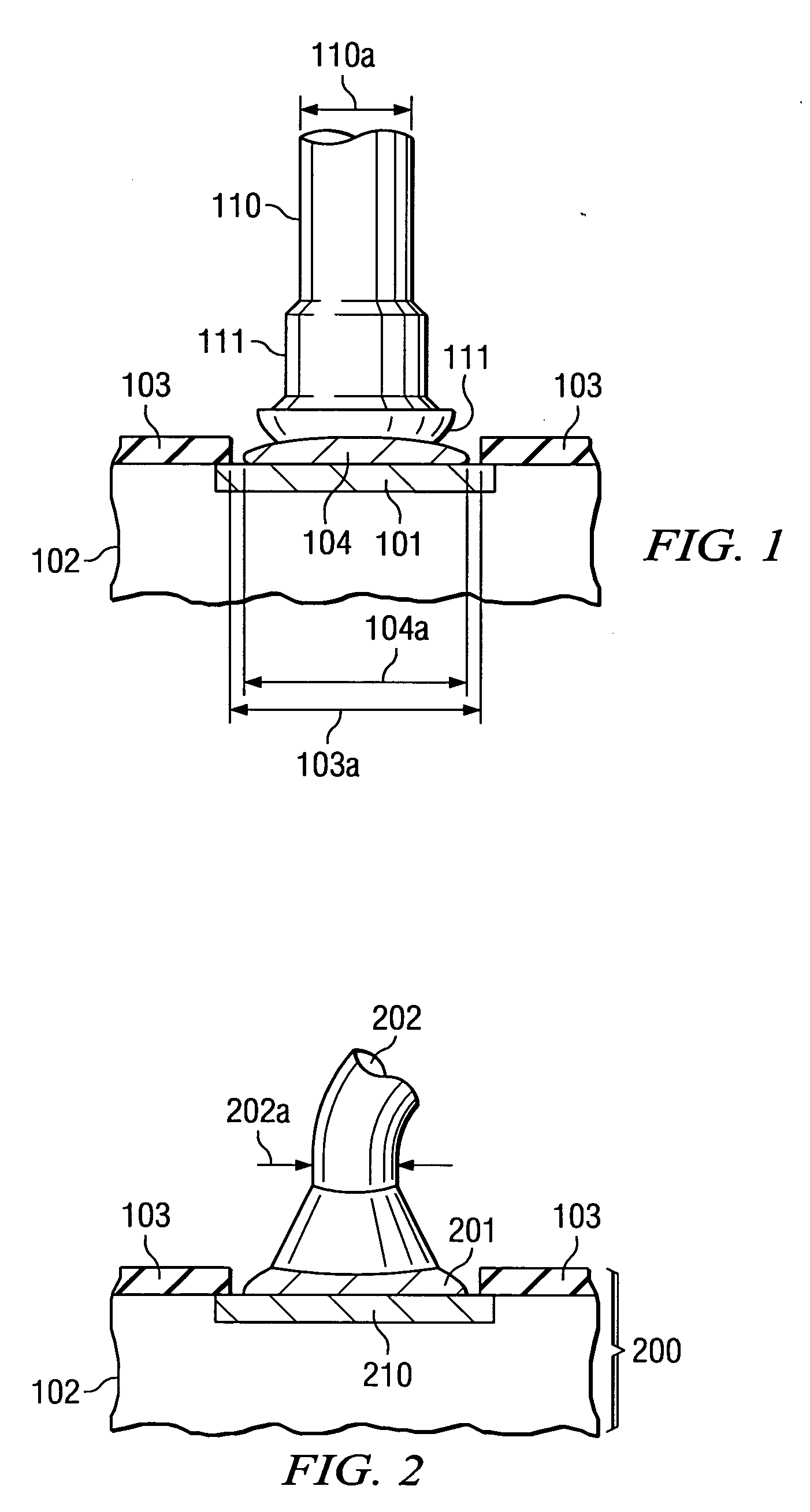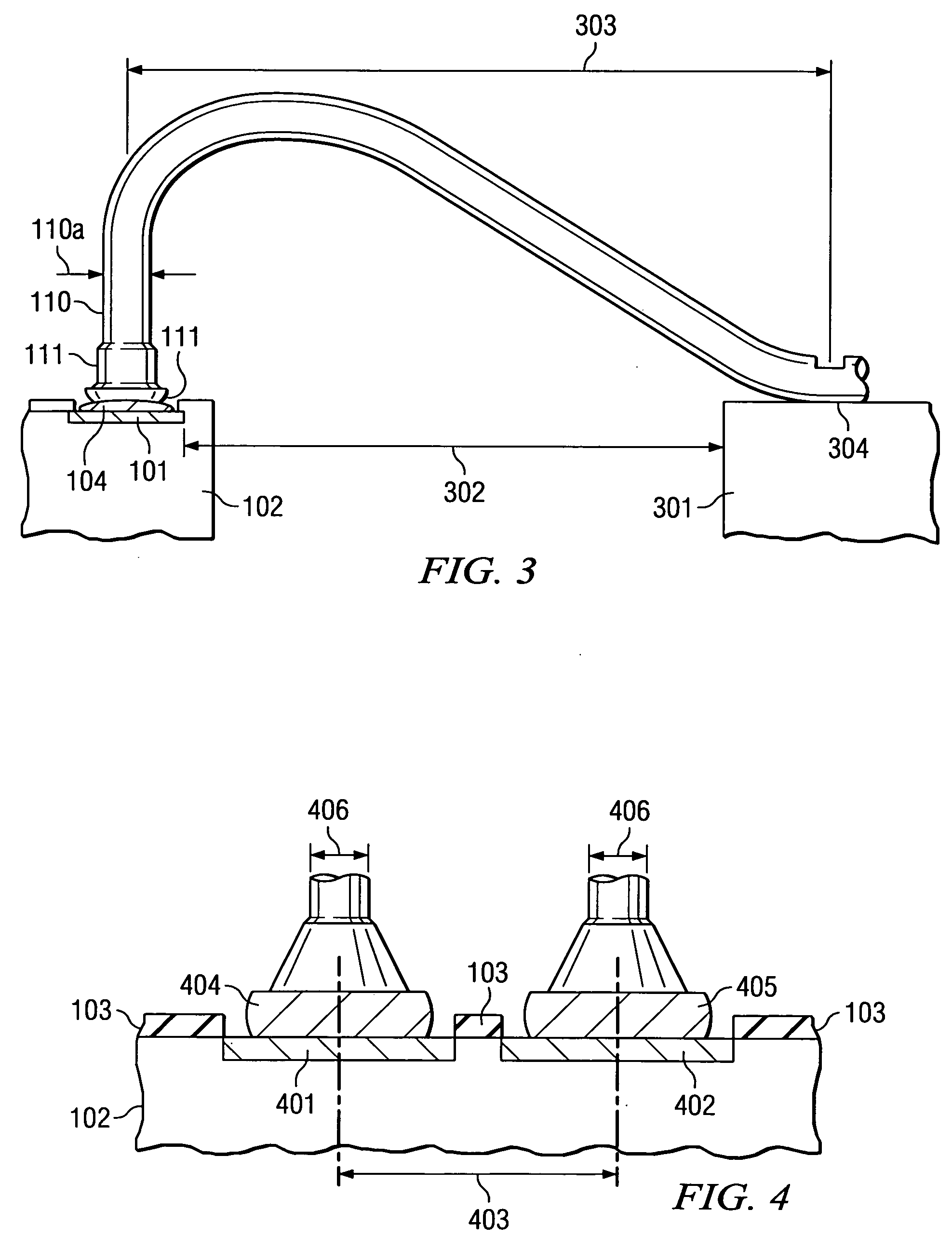Wire bonds having pressure-absorbing balls
a technology of pressure-absorbing balls and wire bonds, which is applied in the direction of non-electric welding apparatus, manufacturing tools, and soldering equipment, etc., can solve the problems of reducing the risk of cracking damage, and reducing the size of the dielectric pattern
- Summary
- Abstract
- Description
- Claims
- Application Information
AI Technical Summary
Benefits of technology
Problems solved by technology
Method used
Image
Examples
Embodiment Construction
[0021] The schematic cross section of FIG. 1 illustrates a portion on the surface of a semiconductor device, which has a protective overcoat 103, typically consisting of silicon nitride or oxynitride. A window in this overcoat exposes a metallic bond pad 101. The window has a diameter 103a. Bond pad 101 is located over insulating material 102. The bond pad metal 101 may be aluminum or copper, or stacked layers thereof. The insulator 102 may include mechanically weak dielectrics such as silicon-containing hydrogen silsesquioxane (HSQ), aerogels, organic polyimides, parlenes, or alternating layers of plasma-generated tetraethylorthosilicate (TEOS) oxide and HQS, or ozone TEOS oxide and HSQ. The mechanical weakness of these dielectrics, generally referred to as low-k dielectrics, is prone to suffer cracks by mechanical pressure and stress created during the wire bonding operations, but their lower dielectric constant helps to reduce the capacitance C in the RC time constant of circuits...
PUM
| Property | Measurement | Unit |
|---|---|---|
| diameter | aaaaa | aaaaa |
| temperature | aaaaa | aaaaa |
| temperature | aaaaa | aaaaa |
Abstract
Description
Claims
Application Information
 Login to View More
Login to View More - R&D
- Intellectual Property
- Life Sciences
- Materials
- Tech Scout
- Unparalleled Data Quality
- Higher Quality Content
- 60% Fewer Hallucinations
Browse by: Latest US Patents, China's latest patents, Technical Efficacy Thesaurus, Application Domain, Technology Topic, Popular Technical Reports.
© 2025 PatSnap. All rights reserved.Legal|Privacy policy|Modern Slavery Act Transparency Statement|Sitemap|About US| Contact US: help@patsnap.com



